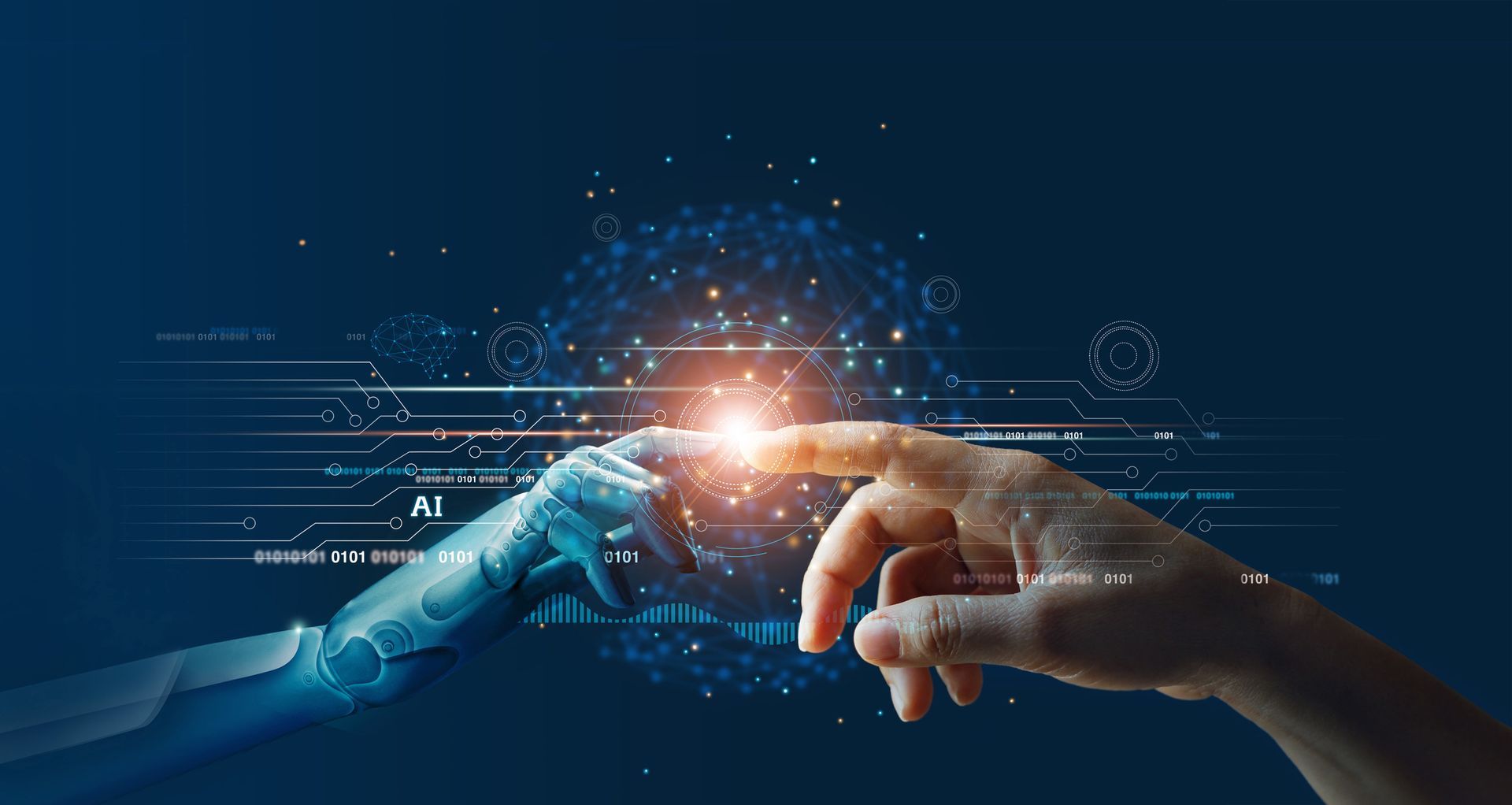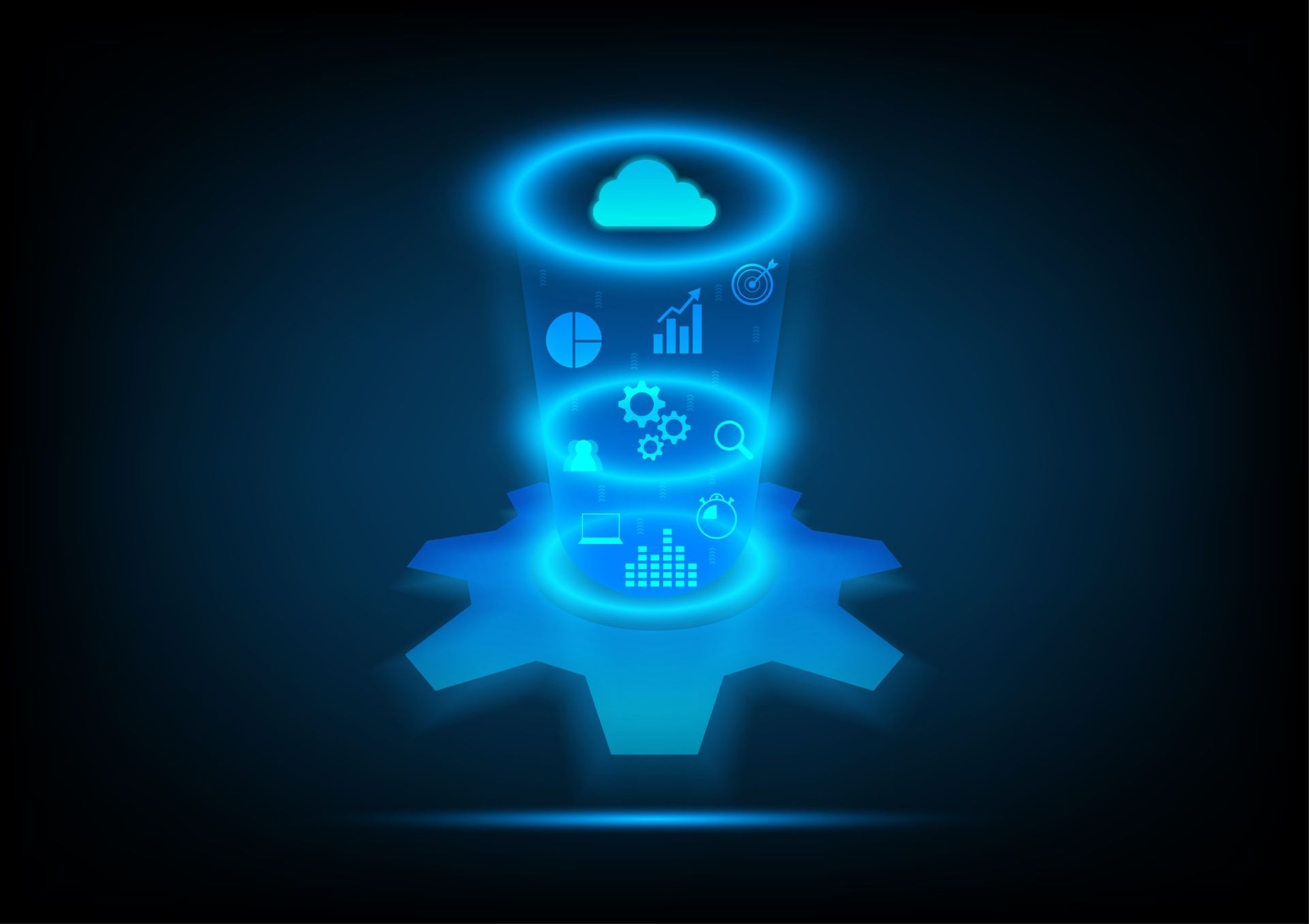Hyperautomation is a framework and set of sophisticated technologies for scaling automation in enterprises. The term “automate everything that can be automated” is used to describe the concept of hyperautomation.
Organizations that use hyperautomation want to reduce operational complexity across their company by applying artificial intelligence (AI), robotic process automation (RPA), and other technologies to execute tasks without human involvement.
Legacy business process automation can now be extended beyond the restrictions of individual processes with hyperautomation. Combining AI technologies with RPA, hyperautomation allows automation for nearly any repetitive activity conducted by business users.
Hyperautomation combines several components of process automation, integrating tools and other automation technologies. RPA is the core of hyperautomation, including AI, process mining, analytics, and other sophisticated technologies.
What is hyperautomation?
Gartner coined the term “hyperautomation” in 2019. The concept reflects that RPA technology is tough to scale at the business scale at the enterprise level and can only automate specific tasks. Hyperautomation provides a framework for automation technologies to be deployed strategically, either separately or together, with AI and machine learning to enhance them.

How does hyperautomation work?
Hyperautomation is all about developing a process for automating the automation. This distinguishes hyperautomation from other automation paradigms that focus on enhancing automation tools or digital process automation (DPA), intelligent process automation (IPA), and cognitive automation, all concerned with automation rather than processes.
Hyperautomation focuses on identifying automation possibilities, determining viable, and generating the appropriate automation artifacts, such as bots, scripts, and workflows that may utilize DPA, IPA, or cognitive automation components.
Hyperautomation centers on adding more intelligence and adopting a systems-based approach to scaling automation efforts. The technique highlights the necessity of finding the correct balance between replacing hand labor with automation and optimizing complicated procedures to remove steps.
Gartner has introduced the notion of a company’s digital twin (DTO). This representation is a virtual version of how commercial processes function. The representation is generated and updated automatically using a mix of process and task mining techniques.
Hyperautomation centers on adding more intelligence and adopting a systems-based
approach to scaling automation efforts
Process flow representations are constructed by mining data from CRM and ERP systems. Each user’s desktop is scanned for machine vision software that generates a picture of processes that span several applications.
The DTO can help organizations assess how new automations impact value, create new possibilities or introduce bottlenecks that must be addressed. It can also assist businesses in determining whether new autonomous capabilities contribute to more significant revenue.
AI and machine learning components allow automations to interact with the world in more ways. For example, OCR (optical character recognition) allows automation to process text or numbers from paper or PDF documents. NLP can extract and structure information from the papers, such as determining which organization an invoice is from, what it’s for, and automatically entering the data into the accounting system.
A hyperautomation platform can be used on top of existing technologies. RPA is one mechanism for entering the world of hyperautomation, and all of the major players are adding process mining, digital worker analytics, and AI integration support.
Other low-code automation platforms, including business process management suites, integration platforms as a service, and low-code development tools, are also adding support for more hyperautomation technology components.

What’s the difference between hyperautomation and automation?
Automated processes have been used for years; however, most of them were more concerned with the best approach to apply automation in a specific situation. These automations were explicitly created for a particular software. Automating many highly repetitive procedures is a typical example of workload automation. Within the context of a particular workflow, BPM tools may automate activities. (Note: We have explained workflow automation in another article.)
AI transcends traditional automation by allowing it to perform more tasks, such as reading documents using OCR, processing them with natural language processing, and generating summaries in natural language. Pre-built modules delivered via an app store or enterprise repository can be used to integrate AI and machine learning capabilities into automations.
Automation development tools that function in low-code environments make it easier to develop automation. Hyperautomation may simplify the creation of automation by utilizing process mining to identify and automatically create new automation prototypes. Humans must improve the quality of these automatically produced templates to a certain degree. However, as hyperautomation technology improves, this manual work decreases.
For automation, a company needs to hire automation engineers, who are responsible for tasks like creating an automated work or manufacturing environment, programming chatbots to answer inbound calls, creating a system for IT support tickets processing and efficiently allocating them, determining whether it’s necessary to automate specific steps in a process to minimize faults, identifying and resolving problems in procedures with the least amount of downtime feasible, installing and upgrading software, databases, and other solutions to improve efficiency. You can read more about this in our article: What is an automation engineer?
Key components of hyperautomation
The term hyperautomation encompasses multiple technologies, tools, and platforms. Let’s take a closer look at its components:
Robotic Process Automation (RPA)
Robotic Process Automation is a software technology for automating repetitive business operations procedures. RPA can be used for procurement, pricing, billing, quote request, follow-up, data input, and system maintenance and repair. RPA software bots work with any application or system that a person would, except RPA bots operate 24 hours a day, seven days a week, and are considerably faster.
Artificial Intelligence (AI)
Artificial intelligence (AI) is a broad space that includes predictions, categorization, and data mining. The field of AI is interested in building intelligent computers able to perform tasks that would otherwise need human intelligence. AI is also useful for pattern detection, complex semantic analysis, and assisting with more complicated NLP, RPA, Chatbots, and other tasks. The goal of AI algorithms is to optimize processes by coordinating computing resources, utilizing historical and real-time data, and taking automated actions.
Machine Learning (ML)
Machine Learning aims to make machines more intuitive and flexible in response to changes. Machine learning is a branch of artificial intelligence that uses algorithms to make data-driven decisions after training on human-verified content. This contrasts with RPA, designed only to complete a specific task.

Natural Language Processing (NLP)
Natural language processing (NLP) has begun to fulfill its potential. Thanks to NLP, computers can now manage and assess vast amounts of natural language data, including meaning and context. This technology applies to vocal and written input; therefore, it’s closely linked with voice recognition, chatbots, and intelligent document processing.
Intelligent Document Processing (IDP)
OCR, or optical character recognition, is a more contemporary form of document processing that uses computer vision algorithms. It translates typed, handwritten, or printed text into machine-encoded text recognized on pictures. A scanned document, a photograph of a document, or subtext text superimposed on an image might be the source of the content.
Big Data
Big Data is a collection of technologies for storing, analyzing, and managing large quantities of data collected by machines to spot patterns and develop optimal answers. It’s critical to give the correct information to software robots.
Benefits of hyperautomation
Hyperautomation helps organizations simplify their operations by eliminating repetitive activities and automating manual ones. This has several significant advantages. It allows businesses to achieve objectives with consistency, accuracy, and speed. This, in turn, lowers costs and enhances the customer experience. As enterprises become more adept at hyperautomation, there are a variety of applications in which it may be applied to enhance business processes.
RPA and machine learning can generate reports and pull data from social platforms to analyze customer sentiment in social media and consumer retention. The marketing team could create real-time, targeted customer campaigns if the data is readily available.

Suppose an organization develops a product quickly and customer demand for it is proven by digital process automation metrics. In that case, the product may be quickly expanded to assist the company in expanding its sales. Alternatively, suppose sophisticated analysis reveals that the product is unlikely to succeed among consumers. In that case, the firm may reduce losses by swiftly eliminating them.
Hyperautomation, like any new technique for running business processes or infrastructure, undoubtedly faces difficulties. Organizations hesitate to get started on automation projects due to unprocessed or low-quality data and a lack of technical expertise to address it.
Hyperautomation use cases
Hyperautomation techniques and approaches are used broadly in many professional and social areas:
Retail
The retail sector is a hotbed for automation. E-commerce has become the dominant order processing method, and with more consumers buying online and using loyalty systems, e-commerce has become dominant order processing method. AI-assisted hyperautomation may enhance front-end activities such as social media ad placement and tailored email marketing, loyalty acknowledgment online, face recognition when a consumer enters a business and more.
Back-end retail processes affected by technology include procurement, billing, supplier management, inventory, and transportation. Reducing costs and enhancing the efficiency and accuracy of these back-end retail processes are possible with technology. Hyperautomation is also used to track and analyze market criteria, including competitive pricing and customer feedback, allowing faster, more accurate decision-making that leads to revenue and profit.
Finance
The financial and banking sectors are under constant pressure to reduce expenses, increase efficiency, and enhance customer experience. Higher data quality provided by hyperautomation can help teams use business process management (BPM) more effectively to deliver information to customers that help them make better-informed decisions.
Hyperautomation also provides operational efficiencies that allow online banking and financial applications to be accessible at all day hours and rules and reporting capabilities. Because both banking and finance companies produce a significant amount of data, keeping track of it is a challenge. Hyperautomation streamlines the processes for greater efficiency, consistency, and reduced error.

Healthcare
The healthcare sector benefits from hyperautomation with better patient experience, improved financial performance, and more precise data. Billing cycles, consumer communication, and collection are all automated with hyperautomation. It can also handle patient record management, data collection, and collation and generate helpful output for more accurate treatment plans.
Hyperautomation is essential to the success and viability of any healthcare organization, especially in light of ever-increasing regulatory requirements. It is also used to keep track of drug stocks, purchases, personnel, and other resources.
Supply chain
In addition to shortages in medications and equipment, the pandemic has reduced access to supplies. Low workforce levels have caused process delays, creating serious logistic issues at worst. RPA can automate stock checks, allowing inventory levels and product availability to be checked. RPA is also used for procurement, pricing, billing, quotation request, follow-up, data input, system maintenance, repair, and inventory monitoring. Automating repetitive procedures with hyperautomation can increase efficiency, speed, and accuracy by eliminating manual intervention.





